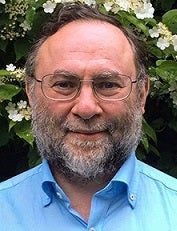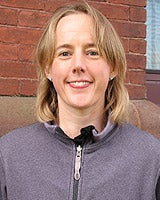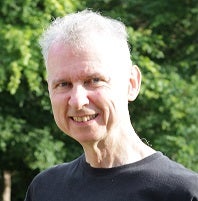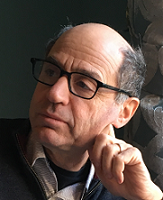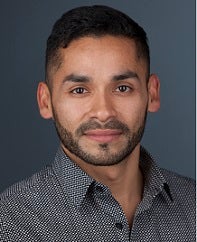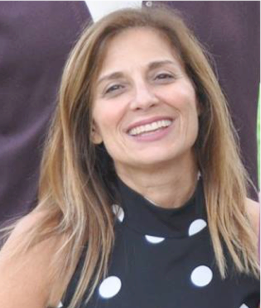Winter 2021 Math Colloquiums
To request access to a recording(s), please contact James, let me know which recording(s) you want access to and you will be added to permissions. *Access will only be given to @ucr Math Department accounts.
January 13th, 2021
Dr. Alexander Goncharov, Department of Mathematics, Yale University
Polylogarithms
Abstract: The logarithm is unique, up to a multiplicative constant, continuous function satisfying the addition law:ln (xy)= ln x + ln y. It is also the integral of dt/t from 1 to x.
The quest for understanding of integrals was and is one of the main driving forces behind the development of Math.The theory of one dimensional integrals of algebraic functions of one variable was created by Abel.The theory of addition laws for these integrals is known now under the hat of algebraic curves and their Jacobians.
Polylogarithms are a different way to generalize the logarithm.The dilogarithm was invented by Leibniz in 1696.Abel discovered the addition law for the dilogarithm, but its role and meaning was understood and appreciated only in 1970's.Since then polylogarithm played an ever growing role in Mathematics and Physics.However their properties are still very mysterious.
I will review what we know about polylogarithms and their functional equation, and what we don't.
**No Recording Available
January 20th, 2021
Dr. Genevieve Walsh, Tufts University
Incoherence of free-by-free and surface-by-free groups
Abstract: A group is coherent if every finitely generated subgroup is finitely presented, and incoherent otherwise. Many well-known groups are coherent: free groups, surface groups, and the fundamental groups of compact 3-manifolds. We consider groups of the form $F_m \by F_n$ or $S_g \by F_n$ where $S_g$ is the fundamental group of a closed surface of genus $g$. We show that all these groups are incoherent whenever $g, n$ are at least 2, answering a question of D. Wise. One possible alternative method to prove incoherence would be to show that these groups virtually algebraically fiber. We additionally show that not all groups covered by our methods virtually algebraically fiber.
This is joint work with Robert Kropholler and Stefano Vidussi.
January 27th, 2021
Victor L. Shapiro Distinguished Lecture in Mathematics: Dr. Jean-Francois Le Gall, Professor of Mathematics, Université Paris-Saclay
Brownian Geometry on the Sphere
Abstract: Much recent work has been devoted to the metric properties of large random graphs drawn on the two-dimensional sphere, which are also called random planar maps. Starting from a triangulation of the sphere with a given number of faces (triangles) and chosen uniformly at random, one considers the metric space consisting of the vertex set of this triangulation equipped with the graph distance.When the size of the triangulation tends to infinity, this suitably rescaled random metric space converges in distribution, in the Gromov-Hausdorff sense, to a random compact metric space called the Brownian sphere (or Brownian map). We will survey recent results showing that the Brownian sphere is, indeed, a universal model of random geometry in two dimensions. If time permits, we will also introduce related models such as the Brownian disk and the Brownian plane, and we will discuss their connections with the Brownian sphere.
Bio: Professor Jean-Francois Le Gall is a distinguished French mathematician working in probability theory (including the theory of Brownian motion), random trees, the Brownian snake, stochastic processes and their connections with partial differential equations.He is a member of the French Academy of Sciences and was awarded the Davidson Prize (in 1986), the Fermat Prize (in 2005), as well as (in 2019) the Wolf Prize in Mathematics. He was awarded his Ph.D. in 1982 from the Université Pierre et Marie Curie (Paris VI) and is a Professor at the Université Paris-Sud Orsay, now part of the Université Paris-Saclay.
February 3rd, 2021
Dr. Matt Baker, Georgia Tech
Pastures, polynomials, and matroids
Abstract: A pasture is, roughly speaking, a field in which addition is allowed to be both multivalued and partially undefined. I will describe a theorem about univariate polynomials over pastures which simultaneously generalizes Descartes’ Rule of Signs and the theory of Newton Polygons. I will also describe a novel approach to the theory of matroid representations which revolves around a universal pasture, called the “foundation”, which one can attach to any matroid. This is joint work with Oliver Lorscheid.
February 10th, 2021
Dr. Michael Harris, Columbia University
Galois representations and automorphic forms
Abstract: The talk will be an introduction to the Langlands program and to some of the preoccupations of contemporary algebraic number theory.I will concentrate on the recent breakthrough of Vincent Lafforgue in defining a Langlands correspondence for reductive groups over the function fields of curves over finite fields, and on my work with Böckle, Khare, and Thorne,which provides a partial converse to Lafforgue's results. I'll also discuss the categorical perspective that is being developed by Gaitsgory and his collaborators, and a possible analogue over number fields.Abstract: The talk will be an introduction to the Langlands program and to some of the preoccupations of contemporary algebraic number theory.I will concentrate on the recent breakthrough of Vincent Lafforgue in defining a Langlands correspondence for reductive groups over the function fields of curves over finite fields, and on my work with Böckle, Khare, and Thorne,which provides a partial converse to Lafforgue's results. I'll also discuss the categorical perspective that is being developed by Gaitsgory and his collaborators, and a possible analogue over number fields.
February 24th, 2021
Dr. Jonathan Montano, New Mexico State University
Degrees and Multiplicities
Abstract: In how many points does a curve in the plane intersect a random straight line? The answer to this question is an invariant of the curve called "degree". The notion of degree extends to higher dimensional shapes that are defined in terms of polynomials (varieties) and it is a central invariant lying in the interplay between Algebraic Geometry and Commutative Algebra. In this talk I will give an overview of this theory and its generalization to varieties in multi-spaces. In particular, I will report on recent joint work with Castillo, Cid-Ruiz, Li, and Zhang.
March 3rd, 2021
Dr. Denise Kirschner, University of Michigan
A systems biology approach to understanding the immunobiology of tuberculosis infection and treatment
Abstract: Tuberculosis (TB) is one of the world’s deadliest infectious diseases. Caused by the pathogen Mycobacterium tuberculosis (Mtb), the standard regimen for treating TB consists of treatment with multiple antibiotics for at least six months. There are a number of complicating factors that contribute to the need for this long treatment duration and increase the risk of treatment failure. The structure of granulomas, lesions forming in lungs in response to Mtb infection, create heterogeneous antibiotic distributions that limit antibiotic exposure to Mtb. We can use a systems biology approach pairing experimental data from non-human primates with computational modeling to represent and predict how factors impact antibiotic regimen efficacy and granuloma bacterial sterilization. We utilize an agent-based, computational model that simulates granuloma formation, function and treatment, called GranSim. A goal in improving antibiotic treatment for TB is to find regimens that can shorten the time it takes to sterilize granulomas while minimizing the amount of antibiotic required. With the number of potential combinations of antibiotics and dosages, it is prohibitively expensive to exhaustively search all combinations to achieve these goals. We present a framework to search for optimal regimens using GranSim. Overall, we present a computational tool to evaluate antibiotic regimen efficacy while accounting for the complicating factors in TB treatment to strengthen our ability to predict new regimens that can improve clinical treatment of TB.
Bio: Dr. Kirschner received her Bachelors, Masters and PhD in applied mathematics from Tulane University. She did graduate work also at Los Alamos National Labs and a postdoctoral fellowship at Vanderbilt University joint with the departments of Mathematics and Infectious Diseases. Over the past 25 years Dr. Kirschner has focused on questions related to models of host-pathogen interactions in infectious diseases. Her main focus has been to build models of persistent infections (e.g. Helicobacter pylori and Mycobacterium tuberculosis and HIV-1). Her goal is to understand the complex dynamics involved, together with how perturbations to this interaction (via treatment with chemotherapies or immunotherapies) can lead to prolonged or permanent health. For the past 20 years, her research focus has been on building multi-scale models to describe the host immune response to M. tuberculosis at multiple spatial and time scales and in multiple physiological compartments including lung, lymph nodes and blood. To date she has worked and collaborated with experimentalists generating data on TB with mouse, non-human primate and human studies. Denise has over 150 publications in top journals describing this work that spans topics from methodological to biological advancement. Dr. Kirschner currently serves (and has for the past 17 years) as Editor-in-Chief of the Journal of Theoretical Biology. She serves as the founding co-director of The Center for Systems Biology at the University of Michigan, an interdisciplinary center at the University of Michigan aimed to facilitate research and training between wet-lab and theoretical scientists. In 2016 she was elected as President-elect of the Society for Mathematical Biology and has served as its president from 2017-2020. Denise’s passion for mentoring students, postdoctoral fellows and junior faculty has been a major focus of her career, and her key mission is to promote both mathematics and family values in the scientific community.
*This was a joint colloquium with the ICQMB at UCR.
